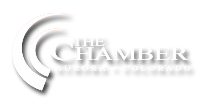Transportation is a big issue in the Metropolitan area, and there are many studies and projects underway to improve local and regional infrastructure and connectivity.
At the September 6 Chamber Transportation committee meeting, updates were provided on two high-level studies/projects: the North Metropolitan Industrial Area Connectivity Study and the DRCGO TIP Process Dual Model.
Beth Vogelsang, with OV Consulting presented about The North Metropolitan Industrial Area Connectivity Study, which concentrates on the transportation network, west-to-east from I-25 to Quebec St., and south-to-north from Martin Luther King Blvd./32nd Ave. to I-270/US 85 and 72nd to State Highway 2. The project goal is to identify and prioritize projects in the study area by providing conceptual design and cost estimates for the top 10 priority projects and discussing funding and implementation needs for the project. Project prioritization is based on identifying projects providing the most effective connectivity in the industrial area, regardless of jurisdictional boundaries.
There are about 60,000 jobs in the study area, which is a mix of heavy and light industrial surrounded by resident and a mix of commercial and retail. In addition, there are freight, transit, vehicles, and bicycle/pedestrian travel modes. Additional considerations of the study are the proximity of the Aerotropolis and a high growth potential in the study area.
There are currently 300 projects listed in the study, which will be reviewed and analyzed to see which projects rise to the top for further discussion. Recommendations will be finalized by the end of the 2017.
On a broader scale, Bryan Weimer, Arapahoe County Transportation Division Manager, updated the group on the Denver Regional Council of Governments (DRCOG) Transportation Improvement Program (TIP) process dual model. The model addresses both regional and sub-regional issues related to improving mobility and infrastructure/services for vulnerable populations; improving transportation safety and security; and increasing the reliability of the existing multimodal transportation network.
DRCOG serves as a regional planning commission in accordance with State Statues, by preparing the plan for the physical development of the region, known as the Metro Vision. DRCOG is also the federally designated area agency on aging, and serves as the metropolitan planning organization for the region. DRCOG receives allocations of federal transportation funding and develops the TIP.
DRCOG adheres to the Federal planning factors of supporting the economic vitality of the Metropolitan Area; increasing the safety and security of the transportation system; Increasing accessibility a mobility of people and freight; protecting and enhancing the environment; promoting energy conservation; improving quality of life; promoting consistency between transportation improvements and State and local planned growth and economic development patterns; enhancing integration and connectivity of the transportation system; promoting efficient system management and operation; and emphasizing the preservation of the exiting transportation system.
These presentations illustrated the dedication and intent of regional and governmental agencies to work together to plan for the future of mobility in the Metropolitan area.







Comments are closed.